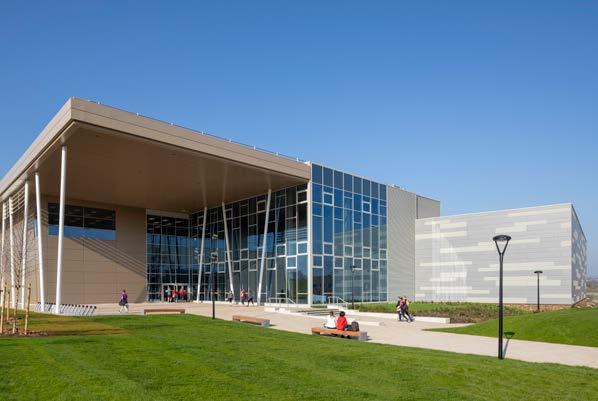HVAC SYSTEMS
De-mystifying the lowcarbon heat puzzle?
C
hris Davis of Hysopt explains how HVAC digital twins are helping university energy and estate managers to identify optimum solutions for decarbonizing their heat infrastructure amid concerns over energy consumption and dependence on fossil fuels. Against a widening backdrop of declared climate emergency, there is increasing pressure on university energy managers and estates directors to develop strategies aimed at reducing carbon emissions. In the UK, there is a target of ‘net zero carbon’ by 2050 to end our contribution to global warming. Universities are setting ambitious targets well ahead of the 2050 deadline and my company spoke to one energy manager recently who is aiming at 2030! Many ‘low regrets’ options (where investment levels are moderate and there are no hard choices in terms of other objectives) have already being tackled, with lighting upgrades being an obvious example. Ongoing decarbonization of the electricity grid means reducing carbon from power
26 | CAMPUS | Winter 2020
is now reasonably straightforward. Sterner challenges Heat (and cooling) however represent more complex and costly issues with a myriad of technological solutions and integration options. Increasingly, universities have already adopted CHP (combined heat and power) as an energyefficiency measure. CHP produces electricity as a useful by-product of heat generation so, in a time when both electricity costs and carbon emissions were high, CHP made sense and was a win-win option. However, while electricity costs remain comparatively high (compared with gas), carbon emissions associated with electricity imported from the grid have fallen more than 50% in the last few years as a result of a changing electricity generation mix (virtually no coal, less gas and lots more renewables such as wind and solar.) This gives energy managers a dilemma because the lowest operating cost option for CHP no longer delivers carbon savings, meaning that universities must look at other solutions as part
of their long-term energy strategy. Cost vs carbon is increasingly going to become a trade-off where the lowest carbon forms of heat (and cooling) are not necessarily the lowest cost options. Meanwhile, electrification of heat (via technologies such as heat pumps) or development of heat networks connected to low-carbon energy sources (such as heat from waste) offer opportunities for campuses to really address the decarbonization of heat. With complexity comes sensitivity An area that is however increasingly misunderstood is correct hydraulic design, integration and control of these technologies, especially when dealing with complex installations. Lowering operating temperatures for example is something that needs to be thought about at the design and planning stage; it’s not a case of replacing gas boilers with heat pumps. Even with established technologies, such as CHP, it’s common for the hydraulic design and control strategy of the installation to mean that the CHP







